ENHANCED HOOPHOUSE PICTURES
In 1992, I was in the first group of Docents for the Konza Prairie Research
Natural Area (now called the Konza Prairie Biological Station)
(see http://kpbs.konza.k-state.edu/),
and I started helping them burn in 1999. In 2000, the "RaMPs" (Rainfall
Manipulation Plots) research project
(see http://www.konza.ksu.edu/ramps/ for more information)
started, and in '03, while helping with a burn, I learned that the project
replaced all twelve shelter covers (30x50-foot sheets of clear plastic)
every year and would give old covers to anyone who could use them.
I had heard about "hoop houses" (an inexpensive form of greenhouse also called
"high tunnels") somewhere (see
http://www.noble.org/ag/horticulture/hoop-house-construction-guide/;
I knew Steve Upson when he was a student at Kansas State University, and by the
spring of '04, I had acquired a cover and had built my own hoophouse by draping
the plastic over "hoops" of PVC pipe and anchoring it with loops of baler twine.
(FWIW, my first hoophouse blew down in the same 65mph wind that toppled
an 18-wheeler on the interstate several years ago, so I now use stronger
structure on each end plus some center support to help it withstand Kansas
winds!-)
For the technically-inclined, the hoops are 7+ meters (24-feet) long, 2.5 cm
(1-inch) diameter, schedule-40 PVC pipes spaced about a meter apart, and the
resulting inside floor size is 5+ meters (17 feet) wide by 10+ meters
(34 feet) long.
So here are several pictures of our "hoophouse" taken in mid-November, 2010.
Any white vertical or sloping pipes you may notice in the background
of some of the pictures are part of an amateur-radio antenna.
The pictures were taken by an amateur (me) with a $13 WalMart-special camera,
so they are not as good as they would have been had Nancy taken them with
her "real" camera, but they are small and should download relatively quickly.
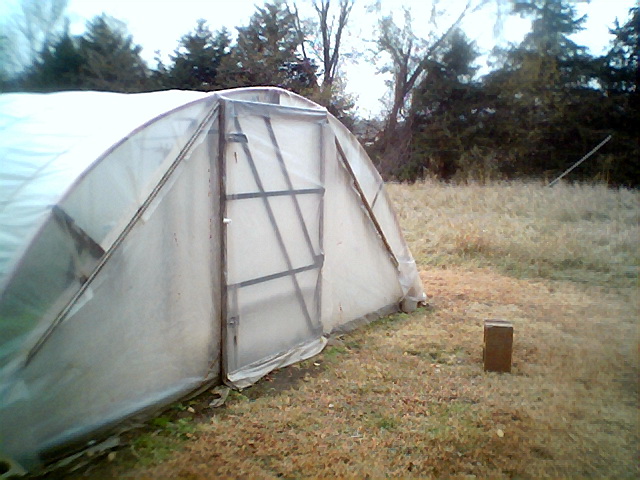
The (closed) north door is a "real" door compared with the roll-up "door"
on the south end:

The (opened) north door; the water-filled bottles around the inside of
the outside edge of the hoophouse hopefully ameliorate cold coming through the
plastic. (The bottles were a nuisance and I eventually removed them.)
You can't see the wire in the pictures, but the bottom half-meter
(below the horizontal 2x4 boards) of both doors is blocked with chicken wire
to try to keep smaller critters out when the doors are open during
the summer. (I think it fools 'possums, but raccoons routinely climb
over and eat our watermelons and early sweet corn!-)
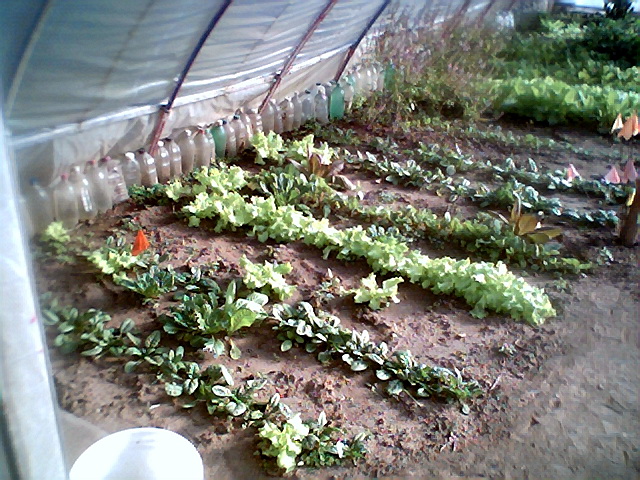
Looking leftward/eastward just inside the north door; the dark green
stuff is spinach and the light green stuff is lettuce. Plants
between rows, are "volunteers" from earlier plantings, including the
tall herb (Basil) which Nancy occasionally uses in cooking and whose
flowers are loved by bees.
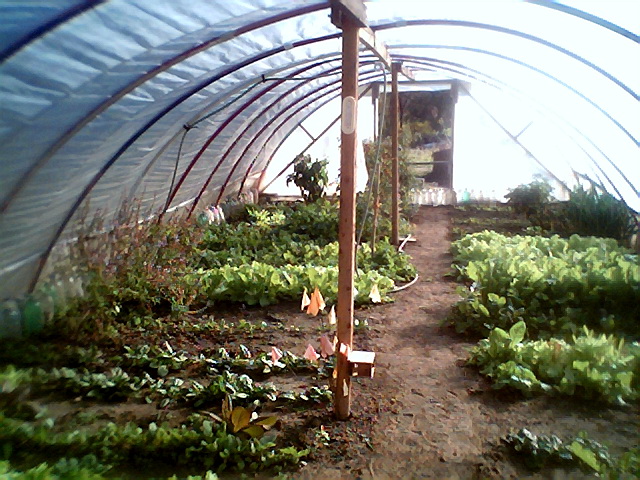
Looking farther inside the north door, with the late-afternoon sun on
the right/west; the taller plant on the left 'way in the back is a bell pepper
not mentioned elsewhere herein. The bottom of the center "beam" is more
than six feet above ground level.
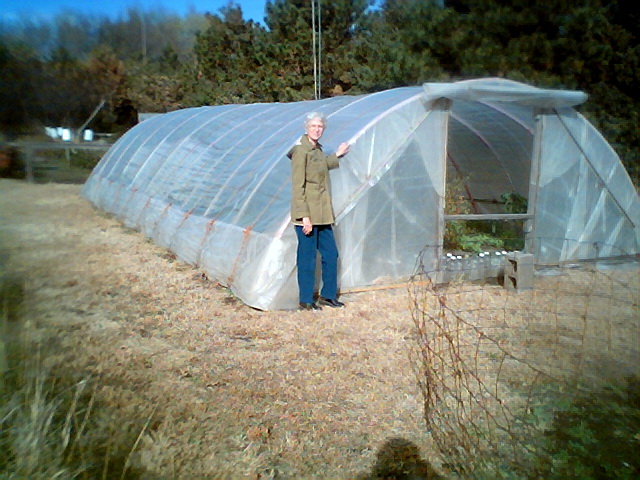
Nancy standing outside the rolled-up south "door", with my shadow in
the low foreground.
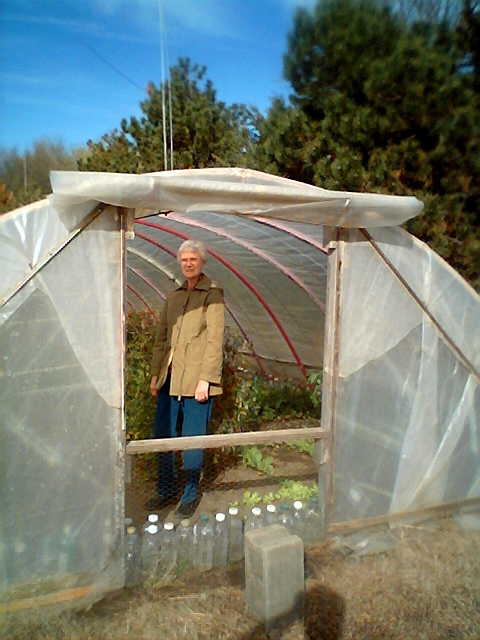
Nancy inside the south "door" obscuring a "grape" tomato plant,
with lettuce just inside the door and radishes behind her.
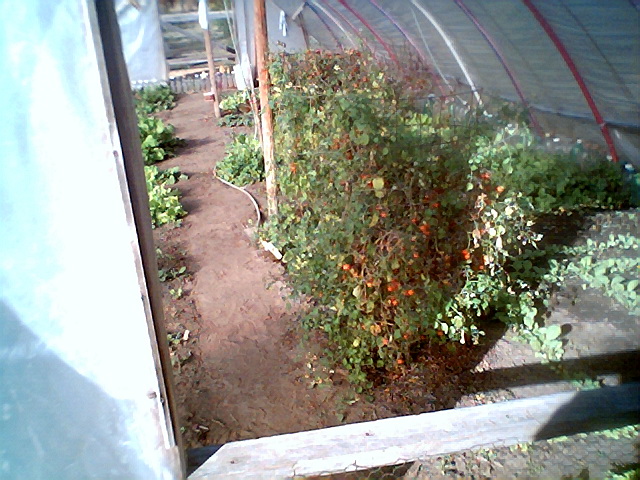
Grape-tomato plant without Nancy in the way.
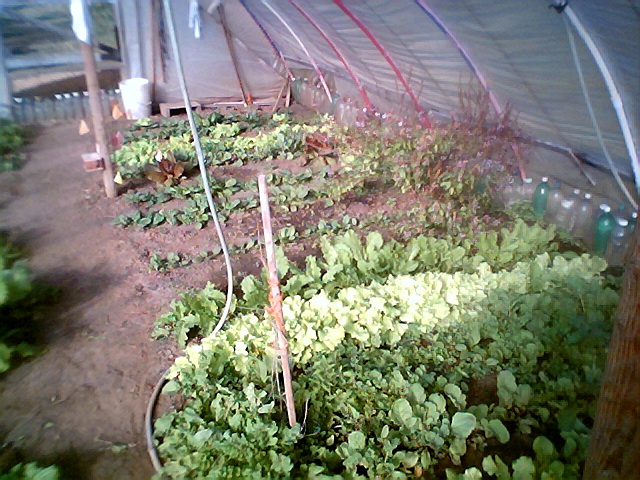
Just past the grape-tomato plants are Arugula (Wiki: "ah rue' guh
la, a yellowish-flowered Mediterranean herb of the mustard family cultivated
for its foliage which is used in salads; also called garden rocket, rocket,
roquette, rugola" -- basically a very-spicy lettuce!), lettuce, spinach, that
Basil plant mentioned earlier, plus several volunteer usually-edible things
scattered here 'n there. The vertical stick marks the remains of a
volunteer UNedible native-prairie "bundle flower" which probably snuck into
the hoophouse in some not-completely-composted compost.
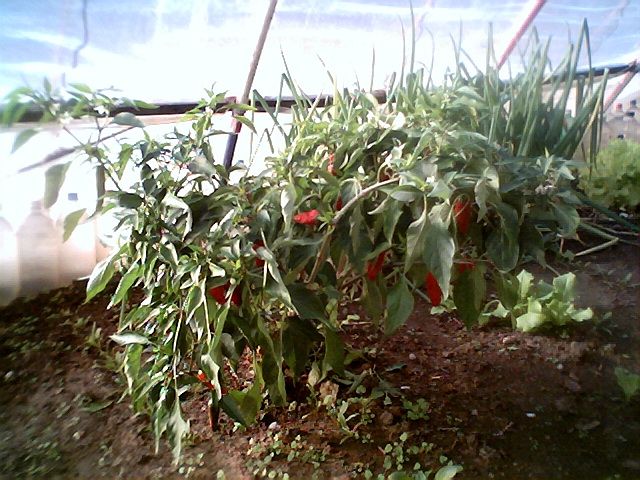
On the left across the center path from the grape tomatoes are one
jalepeno pepper plant (the last of a whole patch of volunteers; we've
already given away two peck buckets of hot peppers this year!-),
with a row of perennial "winter onions" behind it.
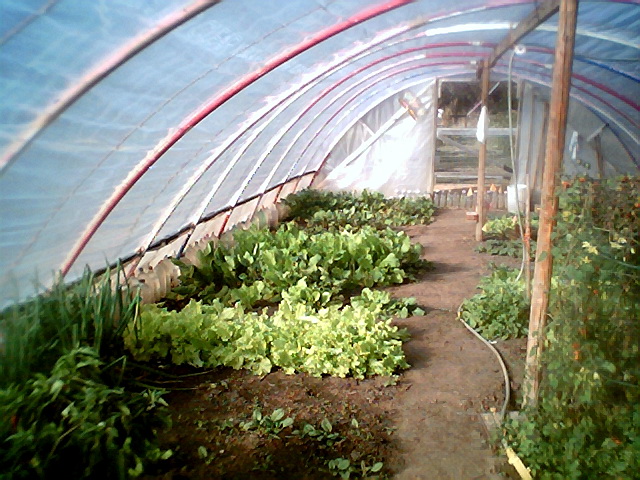
Still looking toward the north door: on the left, just past the
previously-mentioned pepper plant and winter onions; the first big batch of
light-green stuff is lettuce, the middle batch of middle-green stuff is
something that is NOT lettuce, but which tastes "OK" raw on sandwiches
or when cooked as "greens", and the farthest batch of dark-green stuff is more
Arugula (the stuff volunteers everywhere and -- even this late in the
year and after several freezes -- is still growing well OUTside the hoophouse!)
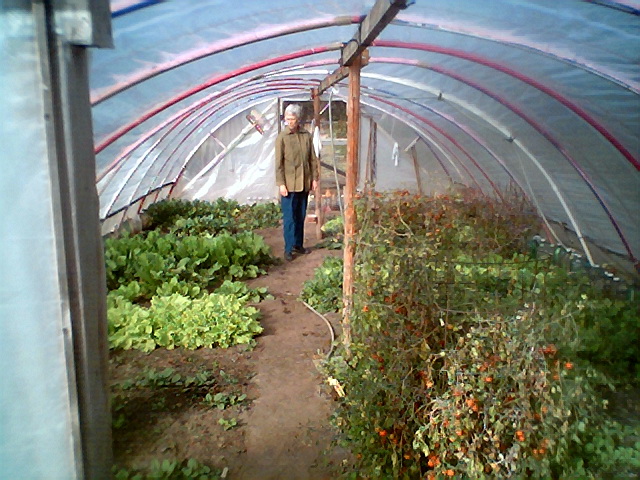
Nancy about three-fourths of the way down the aisle
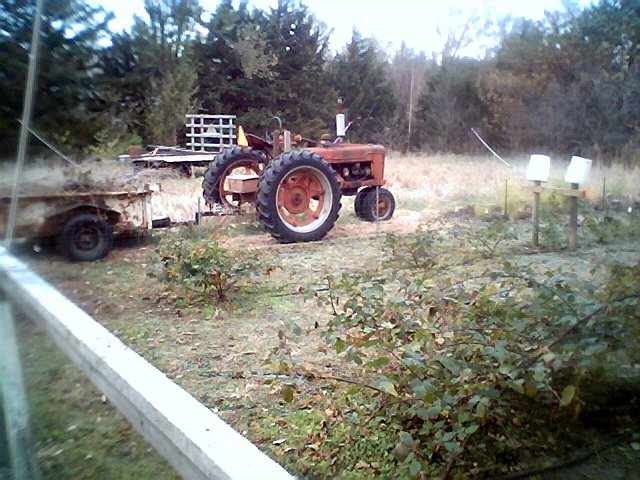
Looking across the south end of our bramble patch (mostly thornless
blackberries, but raspberries north of the posts with white buckets on top)
toward our tractor and two trailers. Unfortunately, that Farmall "H"
won't fit in the hoophouse, so I use a little Mantis rototiller instead.
And that's the end of this tour.
This page was created on 17 November 2010 and modified on 29 November 2010.











